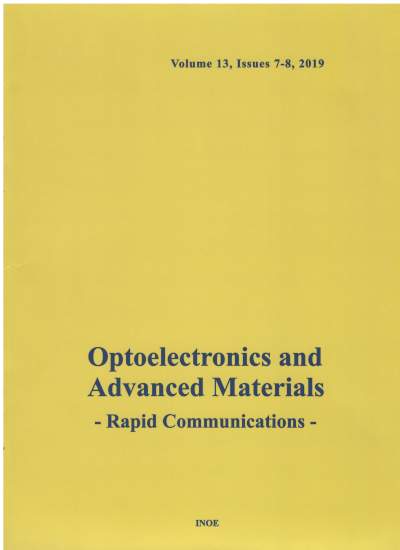Abstract
By applying ammonia plasma treatment and chemical ethylenediamine treatment, amine functionalities were observed in
the poly(ethylene terephthalate) (PET) films surfaces. The modified surfaces were characterized by FTIR, fluorescence,
wide-angle X-ray diffraction (WAXD) and atomic force microscopy (AFM). Ethylenediamine treatment yielded fewer surface
amino groups, and in addition a change in crystallinity as well as degradation of PET. Treatment time dependency of amine
concentration is depicted, more amines were incorporated after exposure to a higher energetic plasma resulted by the
higher ionisation in the plasma. At higher energies at longer treatment, an increase of the amine concentration was
observed. For surface activation, plasma treatment was more efficient than chemical treatment.
Keywords
Poly(ethylene terephthalate), Amine, Functionalization, FTIR, X-ray diffraction, Atomic force microscopy.
Citation
M. AFLORI, M. DROBOTA, D. ŢIMPU, V. BARBOIU, Studies of amine treatments influence on poly(ethyleneterepthalate) films, Optoelectronics and Advanced Materials - Rapid Communications, 2, 5, May 2008, pp.291-295 (2008).
Submitted at: April 3, 2008
Accepted at: May 8, 2008
